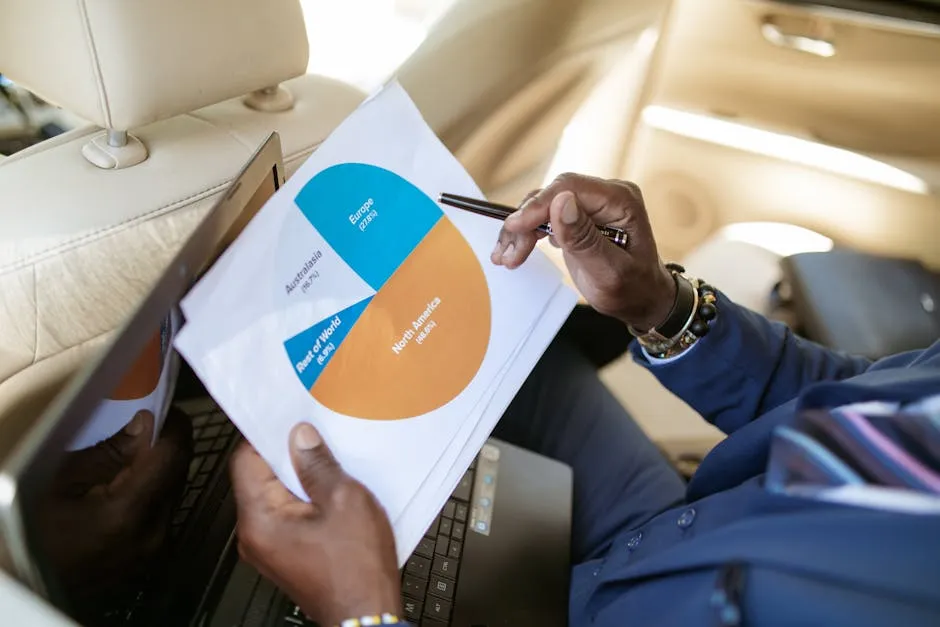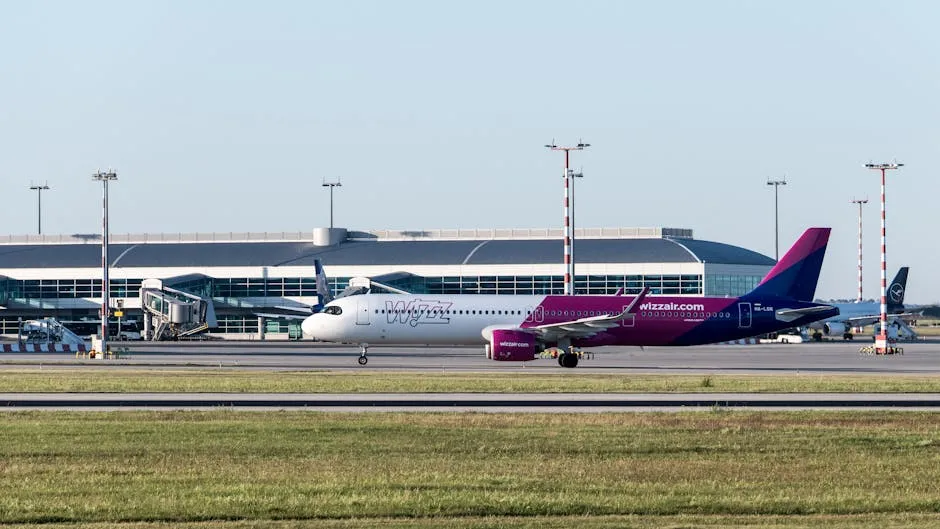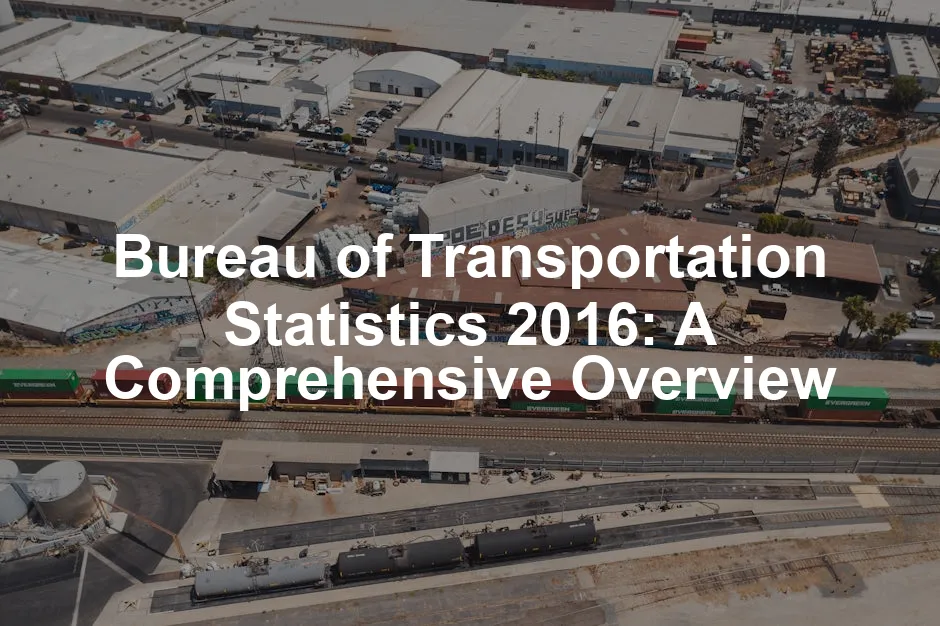Introduction
The Bureau of Transportation Statistics (BTS) plays a vital role in the U.S. transportation landscape. Established within the U.S. Department of Transportation (DOT), BTS collects and analyzes a vast array of transportation data. This data helps inform policymakers, businesses, and the general public about transportation trends and performance.
In 2016, the BTS released critical statistics that highlighted the state of transportation in the United States. The Transportation Statistics Annual Report (TSAR) was particularly significant. This annual report, mandated by Congress, compiles vital indicators and presents a clear overview of the nation’s transportation system.
What can you expect from the 2016 statistics? Well, buckle up! We’ll take a closer look at trends in passenger travel, freight movement, and various other key metrics. The insights from this year provide a valuable snapshot of how transportation evolved and adapted.
Get ready to learn about the record-breaking 928.9 million passengers carried by airlines, the freight movement statistics that keep our economy chugging along, and a host of other fascinating data points.
And while you’re at it, don’t forget to pack your essentials! Grab an Airline Travel Essentials Kit. It’s like the Swiss Army knife of travel gear – everything you need in one compact package!
So, let’s jump into the world of transportation statistics and see what 2016 had in store!

Understanding the Bureau of Transportation Statistics
What is the BTS?
The BTS is the go-to source for transportation data in the U.S. Its mission? To gather, analyze, and disseminate comprehensive transportation statistics. This information supports decision-making across various sectors, including government agencies, businesses, and academia.
At its core, the BTS focuses on several key functions. It collects data from a multitude of sources, including airlines, railroads, and freight carriers. Once collected, the data undergoes rigorous analysis to draw insightful conclusions. Finally, the BTS disseminates this information through reports, databases, and other channels.
By presenting accurate and timely transportation statistics, the BTS helps stakeholders understand trends, identify challenges, and make informed decisions. The BTS is not just about numbers; it’s about improving the transportation system for everyone.
Key Publications and Reports
In 2016, BTS released several key publications that provided valuable insights into transportation trends. One of the highlights was the Transportation Statistics Annual Report (TSAR). This comprehensive report offers essential data on passenger travel, freight movement, safety, and environmental impacts.
The TSAR serves as a critical resource for a variety of audiences, including Congress, the President, and the public. By highlighting key transportation indicators, the report informs policy discussions and helps guide future investments in transportation infrastructure.
Additional reports published by the BTS in 2016 covered topics such as airline traffic data, freight transportation services, and safety metrics. These publications are vital for understanding the economic and social implications of transportation decisions.
And speaking of decisions, if you’re planning a trip, don’t forget to check out a Portable Phone Charger for Travel. Because nothing ruins a trip faster than a dead phone when you need it the most!
In summary, the BTS plays a crucial role in shaping the U.S. transportation landscape. The statistics and reports provided in 2016 serve as a foundation for future transportation policies and improvements. With this understanding, we can now dive deeper into the key highlights from the Transportation Statistics Annual Report 2016.

Key Highlights from the Transportation Statistics Annual Report 2016
Overview of the TSAR 2016
The Transportation Statistics Annual Report (TSAR) 2016 serves as a critical resource for understanding the state of transportation in the United States. Mandated by Congress, this report compiles essential indicators that reflect the dynamics of our national transportation system. The TSAR is not just a collection of numbers; it tells the story of how we move, trade, and interact with our environment.
The scope of the TSAR encompasses various modes of transportation, including air, rail, and road, providing a comprehensive view of passenger travel, freight movement, safety, and environmental impacts. By analyzing these statistics, stakeholders can make informed decisions to enhance transportation infrastructure and policy.
Data collection for the TSAR follows a rigorous methodology. The BTS gathers information from numerous sources, including airlines, railroads, and freight carriers. Each data point undergoes detailed analysis to ensure accuracy. This meticulous approach allows the BTS to present reliable statistics that reflect current trends and challenges in transportation. The 2016 report is no exception; it showcases a wealth of information that is both informative and actionable.

Major Statistical Findings
Passenger Travel
In 2016, U.S. airlines and foreign carriers reached a stunning milestone: 928.9 million passengers traveled by air, marking a 3.5% increase from the previous record of 897.9 million in 2015. Out of this impressive figure, 719.0 million were domestic passengers, reflecting a 3.3% rise. Meanwhile, 209.9 million passengers used international flights, which saw a 4.0% increase. It’s clear that air travel is soaring, and it’s not just the frequent flyers who are contributing to this growth.
When we look deeper, we see that domestic travel continues to dominate, but international travel is also gaining momentum. More people are venturing beyond borders, possibly fueled by increased globalization and the allure of travel deals. Airports are bustling, and airlines are scrambling to keep up with demand. Southwest Airlines led the charge in total passengers, while American Airlines reigned supreme for international flights. Competition is heating up, and customers are the real winners!
And speaking of customers, every traveler deserves comfort! Consider investing in a Travel Pillow and Blanket Set. It’s like having your own cozy cloud wherever you fly!
Freight Movement
Freight transportation is the backbone of our economy, and the statistics from 2016 give us a fascinating glimpse into this vital sector. The Freight Transportation Services Index (TSI) is a key measure used to analyze freight movement trends. Throughout 2016, the TSI showed fluctuating patterns, including a slight decline of 0.6% in September compared to August. However, this decline followed a period of growth, demonstrating the volatility of the freight market.
Key sectors like trucking, rail, and air freight each played unique roles in this landscape. Trucking remains the heavyweight champion, consistently moving the majority of goods across the country. Rail freight saw some ups and downs but remained a critical component for bulk goods. Meanwhile, air freight experienced an uptick, as businesses increasingly rely on fast delivery options to stay competitive in a fast-paced market.
Although some sectors experienced minor declines, the overall freight movement statistics suggest resilience. The TSI level in September 2016 was 121.5, considerably higher than the lows seen during the recession. This resilience indicates that the economy is stabilizing and adapting to changing demands.
And while you’re pondering these statistics, you might want to consider a Luggage Scale. Because no one wants to pay extra for baggage fees due to overpacking! Trust me, it’ll save you from that awkward moment at check-in.
In conclusion, the Transportation Statistics Annual Report 2016 provides a wealth of data that paints a vivid picture of the transportation landscape. From the record-breaking number of passengers to the intricate dynamics of freight movement, the statistics offer invaluable insights. Whether you’re a policymaker, business owner, or just curious about how we move, the TSAR is your go-to source for understanding transportation trends in the U.S.

The Transportation Statistics Annual Report (TSAR) 2016 serves as a key resource for understanding the state of transportation in the U.S. Learn more about the BTS and its impact on transportation.
Safety and Reliability
In 2016, transportation safety metrics took center stage. The Bureau of Transportation Statistics (BTS) reported significant advancements in safety measures across various transportation modes. One of the most striking figures was the accident rate, which saw a decline in many sectors. For instance, the airline industry recorded an impressive safety record, with fewer accidents compared to previous years.
This improvement can be attributed to several measures. Airlines implemented stricter safety protocols and improved training for staff. Additionally, advancements in technology, such as more sophisticated navigation systems, have played a vital role in enhancing operational safety. As a result, passengers could enjoy a safer travel experience throughout the year.
Meanwhile, the National Highway Traffic Safety Administration (NHTSA) reported mixed results for road safety. Although there were efforts to reduce accidents, the number of fatalities on U.S. roads showed a slight uptick. This unfortunate trend highlights the ongoing challenges in ensuring road safety. Increased awareness campaigns and driver education programs continue to be essential in addressing these issues.
Overall, the year 2016 marked a step forward in transportation safety, but the work is far from over. Ongoing efforts are necessary to keep improving safety metrics and reduce accidents on our roads and in the air.

Environmental Impact
The environmental impact of transportation remained a hot topic in 2016. The BTS provided key statistics on energy use and emissions, shedding light on the industry’s effects on the planet. Transportation is a significant contributor to greenhouse gas emissions, accounting for about 29% of total U.S. emissions.
In 2016, the transportation sector saw a slight improvement in fuel efficiency. According to the BTS, energy consumption by the transportation sector decreased by 2.3% compared to the previous year. This decline can be credited to a combination of factors, including advancements in vehicle technology and a shift towards more fuel-efficient models.
However, despite these positive steps, challenges persist. The rise in passenger travel and freight movement contributes to increased emissions. The report revealed that, while energy consumption decreased, the overall emissions from transportation remained high. This indicates a need for continued focus on sustainable practices.
To address these challenges, the government and industry stakeholders are exploring various strategies. These include promoting electric and hybrid vehicles, enhancing public transportation options, and implementing stricter emission standards. The goal is to decrease the environmental footprint of transportation and work towards a greener future.
In summary, while 2016 showed signs of progress in safety and environmental impact, ongoing efforts remain crucial. The statistics reflect both achievements and challenges, prompting a collective push for continued improvement in these vital areas.

Detailed Analysis of Major Airlines
In 2016, the airline industry buzzed like a busy beehive. Major players like Southwest Airlines and American Airlines flaunted impressive numbers. But how did they stack up against each other?
Passenger Numbers and Load Factors
Southwest Airlines emerged as the champion, carrying a whopping 151.7 million passengers. This marked a 5% increase from the previous year. Their load factor, which measures how efficiently they fill seats, hovered around 82.4%. Not too shabby! This means they were nearly at capacity, making every flight count.
On the other hand, American Airlines, while not too far behind, reported 144.2 million passengers. They experienced a slight dip of 1.6% from 2015. Their load factor dipped just a tad to 82.5%. This slight decrease indicates they had a bit more room to spare in their planes. People still flew with them, but perhaps they were a bit more choosy about routes.
So, what do these numbers indicate for the airline industry? The competition is fierce, but the demand for air travel is still soaring. With a growing number of passengers, airlines are encouraged to boost capacity. However, they must balance this with operating costs. After all, no one wants to fly in a half-empty aircraft.

Implications of Statistics for the Industry
The statistics reveal more than just numbers; they illustrate trends. The growth in passenger numbers signals a rebound in air travel post-recession. Consumers are eager to travel, whether for business or leisure. This enthusiasm puts pressure on airlines to maintain efficiency and safety while enhancing customer experience.
Moreover, these load factors suggest airlines are finding a sweet spot. Efficient seat utilization is critical for profitability. Airlines must not only fill seats but also ensure they provide excellent service to keep passengers returning.
As for American Airlines, the slight dip in numbers could serve as a wake-up call. They need to assess their routes and pricing strategies. If they want to reclaim the top spot in passenger numbers, they might consider revisiting their marketing tactics or expanding their network.
In conclusion, 2016 was a pivotal year for major airlines. Southwest Airlines led the pack with impressive growth and solid load factors. American Airlines, while still a major player, faced challenges that could impact their future strategies. The airline industry is a dynamic environment, and these statistics serve as a crucial barometer for success and areas of improvement. As we look ahead, the focus will be on how these airlines adapt to meet the ever-changing demands of air travel.

Challenges and Opportunities in Transportation
Data Gaps and Challenges
The Bureau of Transportation Statistics (BTS) faced several challenges in 2016 regarding data collection and analysis. One major hurdle was the inconsistency in data availability across different transportation sectors. Not all states or agencies reported their data uniformly. This lack of standardization created gaps that hindered a comprehensive understanding of the transportation landscape.
Another challenge was the reliance on various data sources, which sometimes led to discrepancies. For instance, the BTS collected data from airlines, railroads, and freight carriers, but variations in reporting practices made it difficult to create accurate comparisons. Some airlines might report differently compared to others, affecting overall statistics.
Additionally, emerging modes of transportation, like ridesharing services, introduced complexity. The BTS had limited data on these services, which were rapidly gaining popularity. As a result, statistics regarding passenger travel did not fully capture the changing dynamics of how people moved.
In 2016, the BTS recognized the need to improve data collection methods. By focusing on closing these data gaps, they aimed to enhance the reliability of transportation statistics. The BTS initiated efforts to collaborate with other agencies, aiming to streamline data-sharing processes. This collaboration is crucial for creating a more accurate picture of the transportation system.

Future Opportunities
While challenges abound, numerous opportunities for improvement also emerged in 2016. Technological advancements played a significant role in enhancing data collection and analysis. For instance, the rise of big data and analytics allowed for better insights into transportation patterns. The BTS could leverage these technologies to refine their statistical methodologies.
Moreover, innovative practices in data collection were on the horizon. Crowdsourced data, for example, could provide real-time information on traffic patterns, making the statistics more relevant and timely. By adopting these new methods, the BTS could fill the existing data gaps and provide a clearer picture of transportation trends.
Collaboration with private-sector organizations also presented an opportunity. Partnerships with tech companies could lead to the development of more efficient data collection tools, benefiting both parties. This synergy could enhance the accuracy of transportation statistics, ultimately supporting policymakers in making informed decisions.
And speaking of opportunities, don’t forget to prepare for your travels! A Smart Travel Water Bottle can help keep you hydrated and is perfect for those long journeys!
In summary, 2016 highlighted data gaps and challenges faced by the BTS. However, by embracing technology and innovative practices, the BTS can improve data collection methods. This evolution will help create a more comprehensive understanding of transportation in the U.S., paving the way for better policy decisions in the future.

Conclusion
In conclusion, the transportation statistics from 2016 provide invaluable insights into the state of transportation in the United States. The Bureau of Transportation Statistics (BTS) faced significant challenges in data collection, leading to gaps in understanding key transportation trends. Yet, these challenges also presented opportunities for improvement through technology and innovative practices.
The importance of these statistics cannot be overstated. They serve as a foundation for shaping transportation policy and planning. Policymakers, businesses, and the public rely on accurate data to make informed decisions about infrastructure investments, safety measures, and environmental impacts.
As we look forward, it’s essential to stay informed about ongoing developments in transportation statistics. The BTS is committed to enhancing data collection methods and closing existing gaps. By following these advancements, readers can better understand how transportation evolves and adapts to meet our needs.
So, keep your ear to the ground and eyes on the road! The future of transportation statistics is bright, and staying informed will only serve to benefit us all.

FAQs
What is the Bureau of Transportation Statistics?
The Bureau of Transportation Statistics (BTS) is a key entity within the U.S. Department of Transportation. Its primary role is to collect, analyze, and disseminate transportation data that informs policymakers, businesses, and the public about transportation trends and performance.
Why are transportation statistics important?
Transportation statistics are vital for understanding how goods and people move across the country. They help policymakers make informed decisions about infrastructure investments, safety regulations, and environmental policies. Businesses also rely on this data to optimize logistics and improve service delivery.
How can I access BTS reports?
Readers can access BTS publications and data directly from the BTS website. The site offers a variety of reports and statistical data, including the Transportation Statistics Annual Report (TSAR) and other key publications.
What were the main highlights of the 2016 Transportation Statistics Annual Report?
The 2016 TSAR reported significant statistics, including a record of 928.9 million passengers traveling by U.S. airlines and foreign carriers. It also provided insights into freight movement and safety metrics, showcasing the dynamics of the transportation system during that year.
How does BTS address data gaps?
The BTS is actively working to improve data collection and analysis methods. This includes enhancing collaboration with other transportation agencies and leveraging technology to ensure comprehensive and accurate statistics. By focusing on these areas, the BTS aims to provide a clearer picture of transportation trends.
Please let us know what you think about our content by leaving a comment down below!
Thank you for reading till here 🙂
And if you’re still looking for travel essentials, check out a Noise Cancelling Headphones. Perfect for zoning out in airports and on flights!
All images from Pexels




